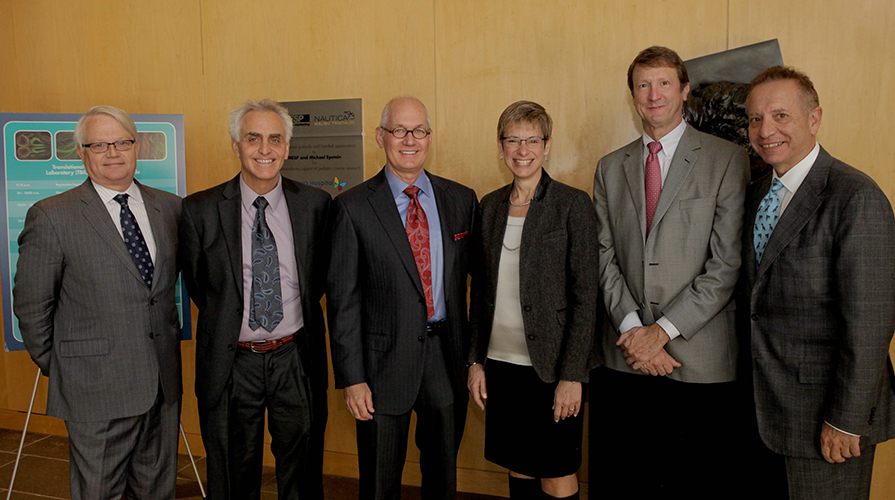
With the launch of the Translational Biomedical Imaging Lab (TBIL), investigators at the University of Southern California (USC) and The Saban Research Institute of Children’s Hospital Los Angeles moved us closer to a day when diseases can be detected before symptoms appear.
TBIL is a unique, interdisciplinary collaboration that combines dynamic equipment, including state-of-the-art microscopes for imaging living specimens and whole organs, with an intellectual infrastructure of optical physicists, computer scientists, translational researchers and clinicians.
USC Provost Elizabeth Garrett, JD, underscored the importance of cross-campus collaborations such as TBIL at the launch event held at The Saban Research Institute on November 13.
“Reaching across campuses, we continue to invest in the intellectual convergence of medicine, chemistry and engineering to improve clinical care for children in our community,” she said. “USC and Children’s Hospital Los Angeles are committed to developing world-class research facilities such as TBIL that provide flexibility for our faculty to collaborate as they address complex health problems.”
Carmen Puliafito, MD, MBA, dean of the Keck School of Medicine of USC, voiced his commitment to maximizing the impact of this important collaboration.
“My mission is to let all our faculty, our medical students, our postdocs know about the great resource that we have here, that’s been created,” he said. “Congrats to TBIL co-director Scott Fraser. We also have here today Andy McMahon from our stem cell institute. And of course, we recruited great imagers from UCLA in Art Toga and Paul Thompson. So imaging at every level is really a newly reinforced theme at USC.”
With TBIL resources, investigators can follow the cells of developing organs and see when and how birth defects and other diseases occur — providing an early opportunity to intervene and change the outcome before symptoms appear.
Attendees witnessed these capabilities during a tour, which included stops at the “Collaboratory” meeting space with high-resolution video and video conferencing; the Live Imaging Lab with a multi-spectral, multi-photon microscope for living specimens; the High Speed Microscopy Lab offering high-speed, volumetric imaging; the Extended Volume Imaging Lab with an integrated microtome and laser-scanning microscope for large specimens; and the Quantitative Image Analysis and Visualization Suite with high-resolution workstations for image processing and analysis.
“Imaging has become the Rosetta Stone of research by allowing investigators access to disease at the most basic, molecular level,” said Scott Fraser, PhD, TBIL co-director, provost professor of biological sciences, biomedical engineering and pediatrics, and principal investigator with USC Stem Cell. “TBIL provides equipment and trained talent in order to accelerate the trajectory of scientific discovery from the bench to the bassinette to the bedside.”
Fraser shares co-directing responsibilities with Rex Moats, PhD, of The Saban Research Institute.
“With the joint recruitment of Dr. Scott Fraser to Children’s Hospital and USC, we have been able to put this amazing imaging resource in place,” said Brent Polk, MD, director of The Saban Research Institute, chairman of pediatrics and vice dean for child health at the Keck School of Medicine of USC, and executive committee member of USC Stem Cell. “TBIL will help accelerate both the diagnosis and treatment of health issues that have significant impact on children and the adults they will become.”
